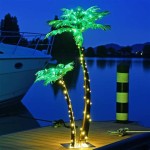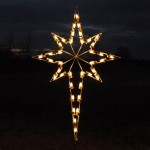How Do You Illuminate Outdoor Stairs?
Illuminating outdoor stairs effectively is a multifaceted practice, requiring careful consideration of safety, aesthetics, and energy efficiency. Proper stair lighting minimizes the risk of accidents, enhances curb appeal, and provides a sense of security for homeowners and visitors. This illumination is not simply about installing lights; it involves a strategic approach to light placement, fixture selection, and an understanding of the surrounding environment.
The principles of good outdoor stair lighting are universal, applying to various architectural styles and landscape designs. However, the specific implementation will differ depending on factors like the number of steps, the materials used in construction, and the overall design of the property. A poorly lit staircase can be a significant liability, while a well-lit staircase becomes a welcoming and safe feature of the outdoor space.
Key Point 1: Prioritizing Safety and Code Compliance
The primary objective of illuminating outdoor stairs is to ensure safe passage, particularly during nighttime hours or in conditions of low visibility. This requires sufficient light levels to clearly define each step and the surrounding area, allowing users to accurately judge distances and avoid missteps. Inadequate lighting can lead to falls and injuries, underscoring the importance of a well-planned lighting strategy.
Different regions have specific building codes and regulations pertaining to outdoor lighting, including requirements for light levels, fixture placement, and energy efficiency. These codes are put in place to protect public safety and minimize light pollution. Before undertaking any outdoor stair lighting project, it is crucial to consult with local authorities and ensure that the proposed design complies with all applicable regulations. This might involve obtaining permits or adhering to specific guidelines for light output and fixture type.
Beyond strict code compliance, consider the specific needs of the users. For example, elderly individuals or those with visual impairments may require brighter illumination levels and features like handrail lighting for added safety. Similarly, stairs that are frequently used by children should be well-lit and free of obstructions.
Consider the potential for glare. While brightness is important, excessive glare can actually impair vision by causing discomfort and reducing contrast. Proper fixture selection and placement are critical for minimizing glare and maximizing visibility. Shielded fixtures that direct light downwards are often a good choice for outdoor stairs, as they prevent light from shining directly into the eyes.
Motion sensors can also significantly enhance safety and energy efficiency. These sensors automatically activate the lights when movement is detected, providing instant illumination and deterring potential intruders. Motion-activated lights are particularly useful for stairs that are not regularly used, as they only illuminate the area when needed.
Key Point 2: Strategic Fixture Selection and Placement
The choice of lighting fixtures plays a pivotal role in achieving effective and aesthetically pleasing outdoor stair illumination. A wide range of fixture types are available, each offering unique advantages in terms of light output, energy efficiency, and design. The selection process should consider the specific needs of the staircase, the architectural style of the property, and the desired aesthetic outcome.
Several popular options include recessed stair lights, which are installed directly into the stair treads or risers. These lights provide subtle, low-profile illumination that highlights the steps without creating excessive glare. Recessed lights are particularly well-suited for modern or minimalist designs.
Another option is stair railing lights, which are integrated into the handrail system. These lights provide both functional illumination and enhanced safety, as they illuminate the handrail itself, making it easier to grip in the dark. Railing lights can be particularly beneficial for elderly individuals or those with mobility issues.
Post lights, mounted on freestanding posts or adjacent walls, can provide broader illumination coverage for the staircase and surrounding area. These lights can be positioned to highlight the entire staircase or to create specific lighting effects, such as spotlighting architectural features or landscaping elements.
String lights or fairy lights can add a touch of whimsy and ambiance to outdoor stairs. While these lights may not provide sufficient illumination for safety on their own, they can be used in conjunction with other fixture types to create a visually appealing and inviting atmosphere. However, ensure the lights are outdoor-rated and properly installed to prevent electrical hazards.
When determining fixture placement, aim for consistent and even light distribution across the entire staircase. Avoid creating dark spots or areas of excessive brightness. A good rule of thumb is to space fixtures evenly and to direct the light downwards, minimizing glare and maximizing visibility. Consider the angle of the stairs and the potential for shadows when selecting fixture locations.
Think about wiring and power considerations. Outdoor lighting requires weatherproof wiring and connections to ensure safety and prevent electrical hazards. Depending on the type of fixtures chosen, you may need to install new electrical circuits or run wiring from existing outlets. Consult with a qualified electrician to ensure that the electrical work is done safely and in compliance with local codes.
Key Point 3: Aesthetic Considerations and Energy Efficiency
While safety is paramount, outdoor stair lighting also provides an opportunity to enhance the aesthetic appeal of the property. The choice of fixtures, their placement, and the color of the light can all contribute to the overall design and ambiance of the outdoor space. A well-designed lighting scheme can complement the architectural style of the house, highlight landscaping features, and create a welcoming atmosphere for guests.
Consider the color temperature of the light. Warm white light (2700K-3000K) creates a cozy and inviting atmosphere, while cool white light (4000K-5000K) provides brighter and more focused illumination. The choice of color temperature will depend on the desired aesthetic and the specific needs of the space. For example, warm white light may be preferable for creating a relaxing ambiance, while cool white light may be more suitable for highlighting landscaping features or providing enhanced visibility on stairs.
Embrace layers of light. Combining different types of fixtures can create a more dynamic and visually interesting lighting scheme. For example, you might use recessed stair lights to illuminate the steps themselves, while using post lights to provide broader illumination for the surrounding area. Adding accent lighting to highlight nearby plants or architectural features can further enhance the overall design.
Consider the materials used in the construction of the stairs and the surrounding landscape. Different materials will reflect light differently, so it's important to choose fixtures and placement strategies that complement the existing elements. For example, dark-colored stairs may require brighter illumination levels to ensure adequate visibility, while light-colored stairs may reflect too much light, requiring fixtures with lower output or shielding to minimize glare.
Energy efficiency is an increasingly important consideration for outdoor lighting. Opting for energy-efficient LED fixtures can significantly reduce energy consumption and lower electricity bills. LED lights are also long-lasting, which reduces the need for frequent replacements. Look for fixtures that are Energy Star certified, as these have been independently tested and verified to meet high standards for energy efficiency.
Timers and photocells can automate the operation of outdoor stair lights, further enhancing energy efficiency and convenience. Timers can be programmed to turn the lights on and off at specific times, while photocells automatically activate the lights when darkness falls. These features can help to minimize energy waste and ensure that the lights are only on when they are needed.
In addition to the above, consider the impact of your outdoor lighting on the surrounding environment. Excessive light pollution can disrupt wildlife patterns and negatively impact the night sky. Choose fixtures that are shielded to direct light downwards and minimize light spill. Avoid over-lighting the area and consider using lower light levels to reduce the impact on the environment.

No Fall Guys Please Ideas For Lighting Your Outdoor Steps

4 Great Ways To Light Your Outdoor Steps And Stairways Landscape Lighting Pro

Best Practices For Stairwell Lighting

15 Outdoor Stair Lighting Ideas Lightopia
13 Most Artistic Outdoor Stair Lighting Ideas To Add Accent Your Landscape Aprylann

Outdoor Stair Lighting Ideas Lumens

How To Create An Outdoor Stair Lighting Design Decksdirect

Light Up Your Nights With These 57 Deck Lighting Ideas For Every Style Exterior Stairs Outdoor Stair Lights

No Fall Guys Please Ideas For Lighting Your Outdoor Steps

Patio Stair Lighting Decksdirect







